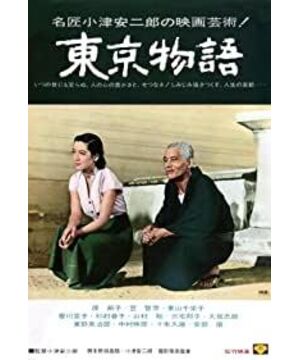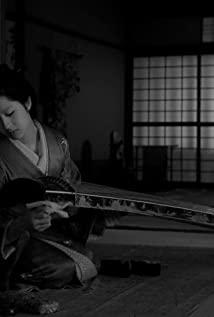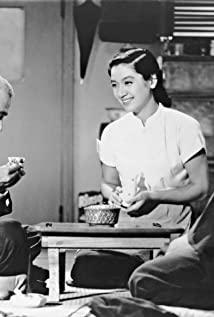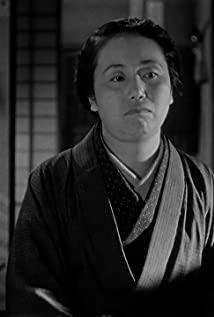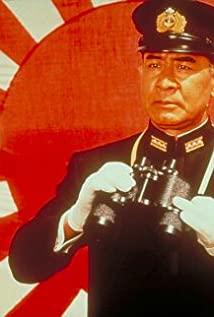Among the most famous directors in Japan, the one who has the greatest opinion on Yasujiro Ozu is Imamura Shohei. At that time, Imamura Shohei's first choice when he applied for the Shochiku Cinematography was to enter the Kinoshita Keisuke group, but because there were too many applicants, he was forced to be assigned to the Ozu group. Imamura Shohei followed Yasujiro Ozu to film "Maiqiu", "The Taste of Tea Soup Rice" and "Tokyo Story", but the process was not comfortable. In his opinion, Ozu only shoots the national image officially recognized by Japan, and the reality of Japan is completely different from the one on the screen. In fact, not only Imamura Shohei, but also some other juniors also scoffed at the director, who is regarded as the "God of Movies" in Japan. Most of the flaws are concentrated on the same story, or focus on the excessive carving marks. Of course, whether the film is used for narrative or purely visual representation is a matter of opinion and unsolved.
However, as many people oppose Ozu, as many people admire Ozu. In the world film industry, Yasujiro Ozu is almost a Japanese director who keeps pace with Akira Kurosawa, the "Emperor of Movies". From Wenders to Kaurimarsky, from Jarmusch to Hou Hsiao-hsien, many directors regard Ozu as their mentor. In particular, Wim Wenders, one of the "Four New German Heroes", specially made a documentary called "Finding Ozu" in the 1980s. He called that trip to Japan a pilgrimage. He walked the road Ozu walked, saw what Ozu had seen, and at the end paid homage to the curtain of Ozu. Wenders once said in an article: "Ozu has changed the lives of many people, and his films make us connect life and death in sequence."
Yes, "life and death" are just like the "family", "diet" and "married daughter" in Yasujiro Ozu's films. Therefore, Ozu repeatedly shoots "weddings" and "funerals", which are not only a ceremony, but also a representation with another meaning. Yasujiro Ozu's two most famous films in the world happen to be based on their own, and the one containing the "wedding" element is "The Taste of Autumn Saury" (for film reviews, see "The Taste of Autumn Saury": The Depression of Autumn, the Taste of Life ) , and the one that contains the element of "funeral" is "Tokyo Story". In the rankings of many film media in the world, "Tokyo Story" can often be shortlisted in the top ten, or even in the top five and top three, which shows the charm of this film.
In "Tokyo Story", we can still experience the strong Ozu style. For example, for a fixed lens like a moving Buddha, except for two or three places where moving camera positions are used, Ozu’s unparalleled expression technique is used in the rest, filtering out pushing, pulling, shaking, shifting, and fading in and out. And the editing method sacrifices the vigor of the picture, but hides the identity of the narrator, emphasizing objectivity and realism; another example is the low-angle shooting, this position and angle are just the height of the traditional Japanese sitting posture, which is also known as Ozu. One of the important reasons for being the "most Japanese" director. At the same time, this angle can be combined with the symmetrical lines inside the Japanese-style room to achieve the compositional shape he intended. To a certain extent, Eastern directors have higher pursuit of composition than Western directors. They should not only learn from the perspective method of Western painting, but also create the effect of "deep and deep courtyard". In other words, the composition must not only be "deep", but also have a "deep" artistic conception. This unique aesthetic is exactly what Ozu wanted.
Another stylistic element is the "empty lens". This is especially evident at the beginning of Tokyo Story. Ozu used five consecutive empty shots in the opening shot. The first shot is a close-up shot of a stone lantern, and the pier and a steamboat in the distance; the second shot is of a few elementary school students going to school; the third shot is driving in the mountains the train. In these three shots, whether it is a steamboat, a student, or a train, it is moving slowly from the left to the right of the frame. As we all know, Japanese prints are read from right to left in the same way as in ancient China, so "right" represents "the past", and "right" means yearning for tradition and the past. In the fourth shot, it is a train running from right to left, which obviously symbolizes the impact of "modern" on "tradition". This symbol is closely linked to the core idea of the whole film.
The Yamato nation is a traditional farming nation, and Japan has also been deeply influenced by Chinese Confucianism in history. Therefore, "patriarchal patriarchy" has always been the dominant element in the formation of Japanese families. Under this system, Japan's family structure is characterized by extended and lineal families, most notably three generations living together under the same roof. The internal management of the family is realized by the absolute authority of the patriarchal system. The father, the eldest son and the husband are the power centers of the whole family, and at the same time follow the hierarchical concept of the superior and the inferior. However, with the changes of the times, the traditional family structure can no longer be maintained.
Most of the families in Ozu's images face such an irreversible "collapse". In "The Taste of Saury", the daughter's marriage is a sign of the collapse of the family system, but in "Tokyo Story", it is replaced by the death of the old mother. We see that it was the mother's last sudden myocardial infarction that brought all the family members together, and it was death that brought about the true reunion of the Hirayama family. This is both a sadness and a final verdict for a family that is falling apart. Before the mother falls, however, the story hints at the audience. The children's dislike of their parents (especially the attitude of the eldest daughter Fan to their parents), the indifference of grandchildren to their grandparents, and even the eldest son, Koichi's family, also reflect this trend (two young children are already very fond of their mothers). disrespect). Instead, the old couple apologized for causing trouble to their children, and the father even thanked the children for taking the time to go back to their mother's funeral.
The reason for the disintegration of the Japanese family system, World War II can be seen as a landmark time point. It is not difficult for the attentive audience to find that Ozu used the old Japanese naval song "March of Warships" in both "The Taste of Saury" and "Tokyo Story", and in almost the same scene, Kasa Zhizhong played Father and old friends reminisce in the tavern, reminiscing about the past while vaguely mentioning the trauma of the war. Of course, Ozu has no intention of directly accusing the war itself, but instead expresses his nostalgia for the Japanese family model before the war by depicting the collapse of the family system. Even if life was not rich, the time before the war was pleasant. The reality of the post-war family was the disintegration of its members.
In-depth study of the reasons, how helpless. Japan's post-war democratic reforms, rapid economic development, and intensified urbanization have weakened the function of "home" and prompted more and more nuclear families (that is, families of three) to be born in cities, and the status of family members Changes are also taking place. At the same time, in the post-war situation, the man as the head of the family has to bear more pressure in life and economics, and has to work hard for a living all day long, which also leads to the lack of "paternal power" in the family. In fact, "Tokyo" in "Tokyo Story" is not just a city, but a landmark symbol, a catalyst for family separation. After the war, family members went to a better city "Tokyo" for their own lives and jobs, while elderly parents set off to Tokyo to "restore" their families, only to find that their children have their own lives. But in their lives, aging parents are "absent".
However, Ozu still left a little bit of beauty for us. Compared with the biological children, Noriko, the widow of the second son of the old couple, seems to be an alternative. Not only is she still a widow eight years after her husband's death in battle, but she keeps her husband's portrait in a prominent place at home, and her attitude towards her in-laws is also gentle and respectful. After attending her mother-in-law's funeral, she deliberately stayed with her father-in-law for a few days, in stark contrast to others who hurried back to Tokyo right after the funeral. But even such a virtuous Noriko is confused about the changes in reality, and in the dialogue with her sister-in-law and her father-in-law, it is revealed that the future may follow the trend. When the values and inherent order of a cultural community are disintegrating, those who are in it will naturally be drawn into a ruthless torrent and feel disoriented about where to go. "Tokyo Story" seems to be a simple and calm lyrical elegy, but in essence it records the turbulent waves of Japanese social changes. In fact, when we bring our own experience into the film, we will find that this is not what we are experiencing?
Yasujiro Ozu has a pure ideal of "making only one movie in his life". From a certain angle, it seems to be the same. In his lens, men and women, young and old, have been living the most ordinary life, birth, old age, sickness and death, weddings, funerals, and marriages. Every day reappears like yesterday, but every day is new. Although it is out of tune with the times, it is harmonious and distant and has a unique charm. As long as it is the daily bits and pieces, it is still enough to make our heart stop and look at the display and passage of life in an optimistic and calm manner.
♑
View more about Tokyo Story reviews


